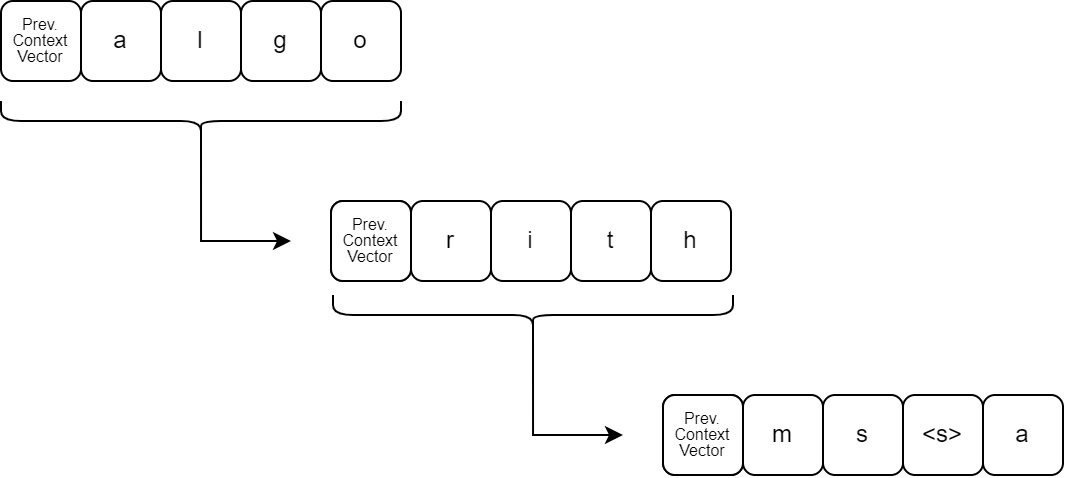This project implements a no-fuss GPT model that avoids fancy multi-GPU training strategies. The GPT contains 6.34 million parameters (very similar to MobileNets) and trained in an old hardware having Intel-i3 processor with 8 Gigs of ram. The model implementation is inherited from karapathy's famous nanoGPT implementation with some of my own basic modifications.
The model is trained on ~20 Gigs Wikipedia dataset from Huggingface. The model is built and trained for educational purposes.
The default context window of the model is 128. A mean context vector generated by PicoGPT to increase it’s context length to 1280. GPT generates embeddings for token sequences. For a sequence of twice as large as current context length, a context vector can be generated by giving the first half as input to GPT. During the process of producing output, a mean of the token sequence embeddings is generated and used as a context vector for the next sequence. Below image gives an illustration of the approach.
class GPTConfig:
# Model parameters: 6.34M [Comparable with MobileNets]
# Improves large-sequence word generation
context_len: int = 128
# Using charachter-level tokenization
# Actual vocab-size is 75, saving some tokens for future use
vocab_size: int = 88
# Improves overall understanding of text
n_layer: int = 8
# Heads gives better understanding of word relation
# Avoids common grammar-level mistakes
n_head: int = 8
# Incresing n_embd gave better word memorization
n_embd: int = 256
# Regularization
# [0.0 for now as we want the model to overfit]
dropout: float = 0.0
bias: bool = TruePicoGPT
│
├── dataset
│ └── tinyshakespeare.txt # contains tinyshakespere dataset for dummy training
├── inference.py # a seperate inference code to run the model
├── logs # contains train log
│ ├── log.jpg
│ └── log.pkl
├── model # contains main model
│ ├── dataloader.py # two dataloaders: 1) tinyshakespere, 2) wikipedia
│ ├── model.py # the main GPT model
│ └── tokenizer.py # a simple lowercase charachter tokenizer
├── LICENSE
├── README.md
├── inference.py # model inference
└── train.py # model training code
- https://arxiv.org/abs/1706.03762
- https://github.com/karpathy/nanoGPT
- https://github.com/karpathy/ng-video-lecture/tree/master
- Understanding Large Language Models
- Understanding and Using Supervised Fine-Tuning (SFT) for Language Models
- LLM Training: RLHF and Its Alternatives
- How does ChatGPT retain the context of previous questions?
- RLHF: Reinforcement Learning from Human Feedback
- The Secret Sauce behind 100K context window in LLMs: all tricks in one place

